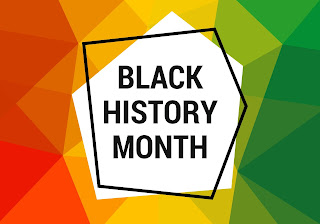Celebrating Black History Month in 2021
Now more than ever it’s important to celebrate and educate ourselves on the amazing diversity of the world. In honor of Black History Month, Community Financial Credit Union would like to share four little-known facts about African American history, along with some great ways to commemorate black history and culture.The most historic part of Rev. Dr. Martin Luther King Jr.’s “I Have a Dream” speech was improvised!
On Aug. 28, 1963, more than 250,000 Americans stood spellbound at the Lincoln Memorial, as King delivered his iconic address. Incredibly, the most revered words were likely ad-libbed on the spot. Dr. King and a group of advisors spent hours polishing the planned speech, and the original version was a lot more political than inspirational. In fact, it did not make any reference to dreams. Onstage, singer Mahalia Jackson allegedly whispered to King, “Tell ‘em about the dream, Martin.”
After intoning, “We are not satisfied, and we will not be satisfied until justice rolls down like waters and righteousness like a mighty stream,” Dr. King’s talk became more inspirational and iconic, leading to the now-famous lines: “Even though we face the difficulties of today and tomorrow, I still have a dream. It is a dream deeply rooted in the American dream …”
It comes as no surprise, therefore, that Dr. King’s address is now considered one of the most successful speeches in American history.
While Rosa Parks became the picture of the historical sit-in, she wasn’t the first black woman to do so.
Before Rosa Parks was on the scene, there was Claudette Colvin.
In March of 1955, the 15-year-old schoolgirl remained rooted to her spot, refusing to move to the back of the bus. This was nine whole months before Rosa Parks’ famous stand. The young girl had been studying the history of black leaders, like Harriet Tubman, in school. The lessons she learned from those historical leaders stuck in her mind, so when the bus driver demanded that Claudette move to the rear of the bus, she refused.
The teenager said, “It felt like Sojourner Truth was on one side pushing me down, and Harriet Tubman was on the other side of me pushing me down. I couldn’t get up.”
Black History Week was originally instated in 1926 before changing to Black History Month in 1976.
Black History Month was originally Black History Week and took place the second week of February 1926, due to it overlapping with the birthdays of Abraham Lincoln and the famous writer/abolitionist Frederick Douglass. In 1976, it was expanded to the entire month of February for the country’s bicentennial.
Since its inception, Black History Month has historically had a theme each year that highlights important developments that merit emphasis. 2021’s theme is “The Black Family: Representation, Identity, and Diversity.” You can find more information at the Association for the Study of African American Life and History’s website here: https://asalh.org/black-history-themes/
Unlike what you see in popular media, one in four cowboys were black.
It might not be the picture you’ll get from watching western movies or TV shows, but at least 25% of cowboys were black. After the Civil War ended, the old Wild West attracted lots of newly freed slaves seeking freedom and paid work.
A couple of famous black cowboys of the era included Bill Pickett, a Texas-born cowboy who is credited with inventing steer wrestling, and Charles Sampson, who became the 1982 World Bull-Riding Champion and a member of the Pro Rodeo Hall of Fame!
Celebrate!
There are so many ways to celebrate Black History Month, from exploring art and literature to getting educated on traditions and historical figures! Here are just a few ideas to help get you started:
- Read the poem, I, Too, Sing America by Langston Hughes.
- Bake sweet potato biscuits, a traditional African American-inspired soul food.
- Jazz up a dull day by tuning into some blues music, a genre created in the 1860s.
- Play the ancient African game of Mancala. You can make a board at home using an empty egg carton with the lid cut off, and some beans for game pieces.
- Look up James Karales’s photos of the 1965 Selma to Montgomery civil rights marches.
- Read On Beauty by contemporary author Zadie Smith.
- View Jacob Lawrence’s Migration Series.
- Read the poem, A Pledge to Rescue Our Youth by Maya Angelou.
- Find a local museum to peruse.
- Do your own research! We particularly like the resources compiled by the Center for Racial Justice in Education.
Your Turn: How are you going to celebrate African American culture and contributions this month? Share with us in the comments!
Community Financial neither endorses the information, content, presentation, or accuracy nor makes any warranty, express or implied, regarding any external site.
« Return to "Money Matter$ Blog"





